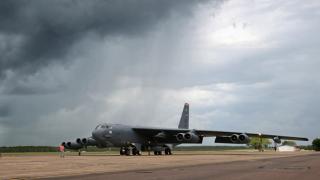Executive summary
The deteriorating security environment and the prospect of nuclear coercion or nuclear use in the Indo-Pacific raise difficult questions for the US-Australia alliance. To prepare the alliance to manage these nuclear challenges, this paper argues that Washington and Canberra should:
- Use scenario-based discussions, tabletop exercises and wargames regularly to better educate policymakers on the changing nuclear threat environment, the scale and scope of joint force posture initiatives, and the implications for extended deterrence and escalation management;
- Deepen the focus on connections between conventional and nuclear forces and escalation management issues within the Australia-US Strategic Policy Dialogue;
- Improve linkages and discussions on nuclear issues within broader Australia-US defence and security forums;
- Create a joint messaging strategy to publicly call out China’s destabilising nuclear build-up;
- Develop agreed-on messaging to carefully tailor, and in some cases limit, how much the alliance publicly addresses escalation concerns; and
- Explore possible options for engaging Japan and South Korea to gain a deeper understanding of how the United States manages extended deterrence and crisis management issues with other regional allies.
Introduction
The United States and Australia are in the midst of a decisive decade. As the Biden administration’s 2022 National Security Strategy warns: “the post-Cold War era is definitively over and a competition is underway between the major powers to shape what comes next.” Part of this competition means relearning how to manage escalation risks with nuclear-armed adversaries. But this is not simply a matter of replicating approaches from the Cold War, especially for the US-Australia alliance, which has little experience managing the web of political and military issues at the heart of nuclear deterrence. Today’s multipolar nuclear threat environment is complex and eroding; and while Washington and Canberra have been reluctant to overemphasise the role of nuclear weapons in the broader strategic competition, it is time to think anew about how the alliance should manage these challenges.
Today’s multipolar nuclear threat environment is complex and eroding; and while Washington and Canberra have been reluctant to overemphasise the role of nuclear weapons in the broader strategic competition, it is time to think anew about how the alliance should manage these challenges.
Three trends are driving this dynamic. First, the nuclear threat environment is changing rapidly in the Indo-Pacific. China’s unprecedented nuclear build-up increasingly casts a shadow over potential flashpoints at the conventional level and raises questions about how the alliance would respond to nuclear coercion or nuclear use. Second, expanded Australia-US force posture initiatives and deepening integration at the conventional level raise questions related to US efforts to better integrate its own conventional and nuclear planning and operations. Finally, while discussions between Washington and Canberra on nuclear and extended deterrence issues are evolving, they remain too general and thus risk overlooking specific scenarios and questions about how the alliance would manage escalation dynamics in a crisis. Addressing these challenges does not mean nuclear deterrence should be a defining feature of the alliance, but it does mean that in today’s strategic environment Australia and the United States cannot ignore the nuclear aspects of possible contingencies or assume that a conventional conflict will stay conventional.
The following paper proceeds in five parts. Parts one and two sketch out the deteriorating nuclear threat environment in the Indo-Pacific and place major transformations in the US-Australia alliance in this context. Part three provides a detailed assessment of the alliance’s extended deterrence policy consultations and highlights the need for further reform to right-size these mechanisms for evolving nuclear challenges. Part four lays out four nuclear scenarios that might stress the alliance’s current policy settings and for which alliance managers require advanced preparation. Part five provides six policy recommendations that can assist Washington and Canberra in better preparing the alliance to address these challenges.
1. The changing nuclear threat environment in the Indo-Pacific
The Biden administration’s 2022 Nuclear Posture Review (NPR) acknowledges the complexity and growing scope of nuclear challenges facing the United States and its allies and partners, particularly given Russia’s reckless nuclear sabre rattling amid its invasion of Ukraine, China’s rapid nuclear build-up, and North Korea’s increasingly sophisticated and expansive nuclear arsenal. In response to these threats, the NPR emphasises that Washington “must be able to deter conventional aggression that has the potential to escalate to nuclear employment of any scale.” At the same time, the NPR also acknowledges that managing a potential military confrontation with or among nuclear powers is only going to become more difficult, particularly considering that escalation dynamics across domains are not well understood, which “will create complex and unpredictable pathways for conflict escalation, especially where collective experience, common understandings, and established norms of behavior (such as cyber and space) are lacking.”
Nowhere is this dynamic more pronounced than in the Indo-Pacific. China is in the midst of a massive effort to modernise, diversify, and expand its nuclear forces. The US Department of Defense (DoD)’s most recent estimate indicates that China may possess up to 700 deliverable warheads by 2027 and will likely have about 1,000 deliverable warheads by 2030. If this trajectory continues, the DoD estimates that China could have 1,500 operational nuclear weapons by 2035.1 Whether China’s rapid expansion and diversification of its nuclear forces reflects a deliberate decision to change the role of nuclear weapons in Chinese military strategy beyond efforts to bolster its second-strike, retaliatory capabilities is an intentional effort to develop options for limited nuclear use or the result of bureaucratic agendas is unknown given Beijing’s lack of transparency.2 When coupled with other changes, however, particularly its increasing number of dual-capable medium- and intermediate-range ballistic missiles and development of nuclear-armed hypersonic weapons, it suggests a shift to new nuclear warfighting concepts that will provide Beijing with new strategic options — options that will cast a nuclear shadow over US and allied military operations in the region and, among other things, increase the potential for limited nuclear use.3 Eroding US conventional advantages, as well as risks of inadvertent escalation also present unique challenges, particularly given China’s emphasis on combined nuclear, counter-space, cyber and electronic warfare capabilities, and the co-location of several of China’s conventional and nuclear missiles and supporting infrastructure.4
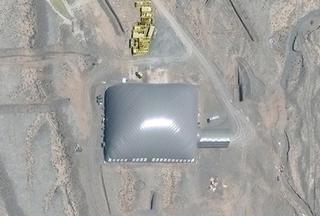
At the same time, North Korea has continued its efforts to diversify and expand its nuclear forces. In 2022 alone, it tested a number of increasingly sophisticated systems and fired more than 90 cruise and ballistic missiles, more than any other previous year.5 Between its long-range systems capable of striking the United States, and its increasing emphasis on tactical nuclear weapons, the prospects for brinkmanship and escalation on the Korean Peninsula are growing.6 In response to North Korea’s continued provocations, South Korea is increasingly concerned about its security and the reliability of US security guarantees. To assuage these concerns and signal the readiness of the United States and South Korea to both deter and, if necessary, defeat a North Korean nuclear strike, the alliance in April 2023 established a new nuclear consultative group, agreed to increase deployments of US strategic assets in and around the Korean peninsula, and stepped up efforts to enhance combined planning and exercises.7 Seoul is nonetheless bolstering its conventional strike capabilities and questioning whether it needs its own nuclear capabilities; and the alliance is seemingly stuck in an action-reaction cycle where it conducts short-order shows of force after North Korean missile tests which, in turn, prompt further actions from Pyongyang.8 Against this backdrop, managing nuclear tensions and the prospects for escalation on the Korean Peninsula will only become more difficult in the coming years.
2. Work to be done: The evolving US-Australia alliance
In response to dramatic changes in the Indo-Pacific security environment, the United States and Australia are doubling down on efforts to deter Chinese aggression.9 In support of these efforts, the US-Australia alliance is rapidly transforming. Between the historic decision to share naval nuclear propulsion technology with Australia through the Australia-United Kingdom-United States (AUKUS) partnership, and a host of other technology-sharing and force posture initiatives, the scale and speed of recent changes within the alliance are dramatic.
Nowhere is this more apparent than in bilateral force posture cooperation. In addition to establishing a rotational presence of US Marines in Darwin, the 2011 force posture initiatives set the stage for a wide range of efforts to enable future integrated air, ground, and naval operations.10 These alliance efforts include the establishment of a number of enhanced air cooperation initiatives to improve interoperability across combat support, maintenance, refuelling, and other advanced warfighting efforts. Both countries have also increased investment in Australian facilities, enabling a much higher level of warfighting integration. In 2021, as part of an expanded set of force posture initiatives, the United States and Australia announced upgrades to Royal Australian Air Force (RAAF) Base Tindal in the Northern Territory that will allow it to host up to six B-52 long-range bombers.11 In addition, in March 2023, Australia, the United States and the United Kingdom announced plans to establish a rotational presence of one UK Astute-class submarine and four US Virginia-class submarines at HMAS Stirling near Perth, Western Australia, as part of a trilateral force posture initiative dubbed Submarine Rotational Forces-West (SRF-West).12
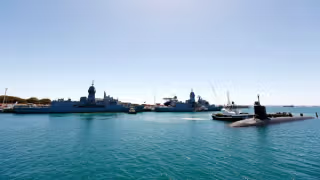
Taken together, these efforts represent a new and deepening phase for the alliance. According to United States Studies Centre Non-Resident Senior Fellow Ashley Townshend:
As these new force posture initiatives mature and become more central to American plans, US warfighters will not only be reliant on Australian bases, infrastructure, logistics, and prepositioned equipment. They’ll also come to depend on ADF [Australian Defence Force] personnel and military platforms for a wide range of supporting, auxiliary, and operational roles as part of a combined effort to preserve the regional balance of power and deter Chinese aggression.13
While headwinds still exist, this level of integration is “propelling the US-Australia alliance into uncharted terrain.”14
However, it remains unclear whether the alliance has worked through how these initiatives might practically interface with US nuclear operations and planning, particularly if deterrence fails. Nor is it clear that there is a shared understanding of the potential relationship between Australia’s conventional capabilities and US nuclear forces. Given the changing nuclear threat environment in the region and Washington’s focus in both the 2018 and 2022 NPRs on “better synchronizing nuclear and non-nuclear planning, exercises, and operations,” understanding these issues is important. While much of this focus is on improving internal planning and targeting options within the geographic combatant commands and building the resiliency of the Joint Force to “continue to operate in the face of limited nuclear attacks,” strengthening integration with allies on these issues is also a priority for Washington. As the 2022 NPR highlights in the way it describes the US approach to strengthening regional nuclear deterrence in the Indo-Pacific: “Greater capability integration is an important goal, as well — to better synchronize the nuclear and non-nuclear elements of deterrence and to leverage Ally and partner non-nuclear capabilities that can support the nuclear deterrence mission.” This emphasis is evident in Washington’s extended deterrence dialogues with Japan and South Korea, as well as in some of its combined exercises in the region. For example, US B-52 bombers now frequently deploy alongside South Korean fighters as well as Japanese fighters for combined exercises and training events.15 Understanding what this does or does not look like in the Australia-US context, however, will require adapting existing consultation mechanisms and building from the unique history of the alliance’s bilateral extended deterrence relationship.
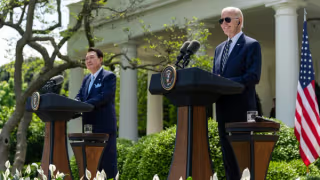
3. Keeping pace with the threats: US-Australia extended deterrence discussions
The United States and Australia share a unique history when it comes to nuclear and extended deterrence issues. The United States and Australia formalised their alliance in 1951 with the signing of the Australia, New Zealand and United States Security Treaty, or ANZUS Treaty, which continues to provide the basis for the alliance today.16 As the alliance developed, Australia and the United States established joint facilities at Pine Gap and Nurrungar in the 1960s. These facilities were originally designed to provide early warning for Soviet ballistic missiles and monitor nuclear explosions during the Cold War. Over the years, the specific missions and capabilities of the joint facilities evolved (as did the facilities and locations themselves), but they have continued to play a central role in delivering intelligence and supporting critical communications, including for US ballistic missile submarines.17 These facilities operate under the principle of “full knowledge and concurrence,” which means Australia has a full and detailed understanding of what is taking place on its territory and approves of the purpose and outcome of those activities.
Despite this aspect of the relationship, nuclear issues have never featured prominently in the alliance and the “full knowledge and concurrence” principle has never translated into deeper, sustained discussions about US nuclear planning or employment. Yet the joint facilities are still the lens through which most Australian officials view US extended deterrence commitments — to the extent they have thought about it at all. For instance, in 2019, then-Defence Minister Christopher Pyne and then-shadow minister Richard Marles issued statements on the joint facilities that have long been operated by Australia and the United States. As Pyne acknowledged at the time, “Australia is not only a beneficiary of the US policy of extended nuclear deterrence, it is an active supporter of it, through our joint efforts with the United States at Pine Gap and at other facilities, such as the Naval Communication Station Harold E Holt, and the Joint Geological and Geophysical Research Station.”18 Nonetheless, Australia is unique among US allies in that it has largely preferred not to discuss US extended nuclear deterrence commitments publicly.19 Part of this stems in recent years from Australia’s longstanding support for nuclear disarmament, and part of this is due to Australia’s geography and the fact that it was largely removed from Soviet threats during the Cold War, which meant it sought fewer assurances from the United States than other US allies.20 It is also a result of the fact that to the extent that extended deterrence concerns have come up, Australian concerns primarily centre on risks of entrapment, not abandonment.21
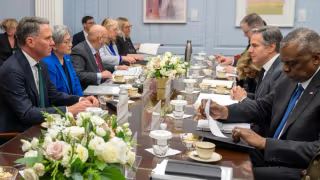
Today, these dynamics are shifting. The prospect of limited nuclear use, worsening security environment, and US focus on conventional-nuclear integration are changing the demands on alliance consultations. Furthermore, entrapment concerns still exist, but they are now a two-way street. As US allies rethink their defence strategies and dramatically increase their investments in new, more potent conventional capabilities and systems, it changes the way Washington needs to talk to its allies and partners about nuclear weapons and escalation dynamics, particularly in a conventional conflict. As Australia brings online additional capabilities, such as its conventionally-armed, nuclear-powered attack submarines, Washington and Canberra need to have frank discussions about what mission those capabilities will support, and how the alliance would manage an incident in the future. For instance, will Australian attack submarines be chasing Chinese ballistic missile submarines, a common mission for the type of subs Australia will acquire through the AUKUS partnership? Or will they be assigned different or complementary roles? How is the alliance preparing for these kinds of expanded missions in the future?
Alliance discussions on these issues need to evolve to address these issues. Australian policymakers ought to be aware of whether and how they might be drawn into a crisis, and think through what assurances they would want from Washington if Australia was threatened or targeted. Australia also needs to consider its growing connectivity with elements of US nuclear forces and determine what supporting role, if any, it might play, in possible employment scenarios and whether the “full knowledge and concurrence” principle would apply to “joint” operations in the same way it applies to the joint facilities. At the same time, US policymakers also need to understand allies’ views on conventional-nuclear integration as well as where and how Australia’s growing conventional capabilities, particularly its future nuclear-powered attack submarines and long-range strike capabilities, might increase opportunities for unintentional escalation, and how this could affect the United States’ ability to manage a crisis in the future. In all cases, Washington and Canberra will need to focus on better understanding and stress-testing decision-making on both sides and have a much deeper understanding of the interface between conventional and nuclear operations in order to address these dynamics.
In all cases, Washington and Canberra will need to focus on better understanding and stress-testing decision-making on both sides and have a much deeper understanding of the interface between conventional and nuclear operations in order to address these dynamics.
While there are signs that the alliance is starting to take small steps in this direction, more work is needed. In 2019, US and Australian officials quietly established the Strategic Policy Dialogue (SPD) to begin addressing the gap in extended deterrence consultations.22 While Australia does not view this as a purely extended deterrence dialogue, US officials have been referencing the SPD in congressional testimony alongside similar consultative mechanisms that the United States has with South Korea and Japan.23 Notwithstanding this difference in focus, Australian officials are becoming more open in acknowledging the US-Australia extended deterrence relationship. As Australia’s 2023 Defence Strategic Review acknowledges: “In our current strategic circumstances, the risk of nuclear escalation must be regarded as real. Our best protection against the risk of nuclear escalation is the United States’ extended nuclear deterrence and the pursuit of new avenues of arms control.”24
The remit for the SPD is still broad, however, and includes discussions on a wide range of regional security, arms control and nonproliferation issues in the Indo-Pacific.25 While useful from a broader policy and messaging standpoint, if the balance is not right, it can easily crowd out detailed discussions on extended deterrence and escalation issues, which are critical for ensuring the alliance is postured to navigate a wide range of potential nuclear threats in future crises or conflicts in the region. There is also a concern that discussions on nuclear issues are largely kept separate and distinct from broader discussions on the regional security environment and force posture initiatives. For instance, on the US side, following a 2021 reorganisation in the Office of the Secretary of Defense, there appears to be no cross-over in officials who lead SPD discussions, and those who lead and participate in the broader Defense Policy and Strategy Talks.26 If this dynamic is not carefully managed, it will obscure a key element of the Indo-Pacific threat picture and mirror the broader stovepipes that are complicating efforts to improve integration across the DoD. Given that any conventional conflict in the Indo-Pacific is likely to have a nuclear dimension, this will create significant deterrence, political and warfighting challenges.
At the ministerial level, officials have begun to discuss a wider range of nuclear threats. Even the AUSMIN public statements on nuclear issues have gone from focusing solely on condemning North Korea’s nuclear and missile programs,27 to beginning to address issues related to escalation and strategic stability. For instance, the December 2022 AUSMIN statement for the first time raised concerns about escalation dynamics in concert with calls for China to be more transparent with its nuclear weapons build-up and to engage in talks on risk reduction:
The four principals emphasized the importance of all countries managing strategic competition responsibly and committed to work together to ensure competition does not escalate into conflict. The United States and Australia look to the PRC to do the same and plan to engage Beijing on risk reduction and transparency measures. The principals encouraged the PRC to take steps to promote stability and transparency in the area of nuclear weapons.28
This is certainly progress, but it stops short of explaining why Washington and Canberra are concerned about China’s lack of transparency with regard to its nuclear build-up, and what the consequences of this might be, particularly in a crisis. The statement also focuses exclusively on managing strategic competition responsibly but creates few internal demand signals for prioritising and deepening bilateral discussions on extended deterrence and escalation management. Going forward, the alliance needs to adapt its consultation mechanisms to ensure senior decision-makers understand and can weigh in on key underlying questions, such as:
- What role would Australia play in a Taiwan contingency, or in response to a North Korean attack? Are there shared assumptions about what constitutes a crisis and what requires a response?
- What risks would Australia incur in certain scenarios, and what assurances would it want from the United States, particularly if the threat of nuclear use, or actual nuclear use, is involved?
- Will Australia accept or demand a say in, or awareness of, US nuclear-related operations that might be staged from Australian territory? Would it support such actions with Australian conventional operations?
- How might Australia’s growing conventional capabilities affect escalation and crisis management dynamics in the future? For example, will Australia’s nuclear attack submarines be chasing Chinese ballistic missile submarines in the future, and has the United States thought through how it would handle an Australia-China incident?
- If the United States is engaged in two crises simultaneously, how would this affect alliance planning and operations?
- In a crisis, does the alliance understand each country’s decision-making structures and have a shared understanding of what would be escalatory in certain situations?
- Does the alliance have the capacity and expertise to deal with these issues in the future? And are alliance consultation mechanisms structured in a way that allows officials to consistently address these questions over time?
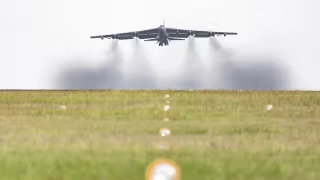
4. Scenarios that might stress extended deterrence commitments and escalation management mechanisms
As the alliance works through these questions and the relationship between the alliance’s growing conventional military integration and US nuclear planning and operations, it should concentrate on a range of scenarios with a nuclear shadow that could stress extended deterrence commitments and escalation management mechanisms in the future. While Washington and Canberra may not agree more broadly on which of these scenarios should be the focus for coordinated military planning, it is important to realise that each of the four following scenarios includes nuclear considerations that must be part of the equation. These scenarios include:
- Taiwan. Taiwan is perhaps the most obvious flashpoint that could affect the alliance. Between increased cross-Strait tensions and China’s aggressive nuclear build-up, the alliance needs to be prepared to not only deter a change to the status quo in Taiwan but also to anticipate how it would handle Chinese nuclear coercion aimed at deterring US or allied intervention during an invasion, as well as the prospect for limited Chinese nuclear use in an attempt to end a crisis on Chinese terms.29 The fact of the matter is, any crisis over Taiwan will have a nuclear shadow, and the alliance needs to deliberately factor this element into its discussions and planning. This should also include frank discussions on the potential targeting of Chinese sites that house both conventional and nuclear systems, as well as the prospect of US limited nuclear use — particularly if those operations are conducted from Australian territory or supported by Australian conventional capabilities.
- North Korea. As a close ally and leading contributor to the United Nations Command, the United States would almost certainly request support from Australia in a crisis with North Korea.30 The scale and scope of that request would depend on a host of things, including whether it is an all-out conflict, a limited attack, or a collapse scenario, but could include direct or indirect requests for forces, assets or logistics support. While the direct threat to Australia may be lower, there is still the potential for US forces to stage operations from Australian territory, particularly US bombers or submarines, or for North Korea to attack Australian forces. If Australia commits support to a crisis or conflict with North Korea, Washington and Canberra may need to work though, ahead of time, how it would respond if North Korea uses nuclear weapons and align these discussions with US-South Korea planning.
As the alliance works through these questions and the relationship between the alliance’s growing conventional military integration and US nuclear planning and operations, it should concentrate on a range of scenarios with a nuclear shadow that could stress extended deterrence commitments and escalation management mechanisms in the future.
- Opportunistic aggression. The alliance also needs to understand how an expanded conflict in Europe with Russia might affect planning and operations in the Indo-Pacific. If the United States ends up in a large-scale conflict with a major power in one region, US policy indicates it will rely on allies’ capabilities as well as nuclear weapons to deter or defeat adversaries who may decide to take advantage of that conflict and launch an attack on a second front. Whether this translates to simultaneous or sequential conflicts with Russia and China, for instance, or North Korea or Iran taking advantage of a great power conflict, this could have profound implications for Australia. Understanding what would be asked of Australia in these instances will be critical, as will understanding what the implications might be of the United States being forced to rely more heavily on its nuclear forces, and what this might mean for joint US-Australian operations if large elements of US conventional forces are tied up elsewhere. Solely focusing alliance discussions and planning on a single scenario, such as a conflict over the Taiwan Strait, overlooks a wide swath of difficult situations that could significantly affect the alliance. Washington and Canberra cannot and should not wait to work through this set of challenges.
- Incident with China. Short of a full-blown conflict, the prospects for an incident with China in the maritime, air or space domains remain high. While the 2001 EP-3 incident may force some US policymakers to view this solely through a US-China lens, this is not just a US-China dynamic. For instance, Australia actively supports freedom of navigation efforts in the South China Sea alongside the US 7th Fleet, and the Royal Australian Air Force (RAAF) has experienced unsafe encounters with Chinese fighter jets while conducting maritime surveillance flights in the area.31 As Australia brings online additional capabilities, such as its conventionally-armed, nuclear-powered attack submarines, Washington and Canberra need to have frank discussions about how the alliance would manage an incident in the future. The United States has virtually no crisis management mechanisms in place with China to quickly and effectively resolve incidents, misunderstandings, or accidents. Where they do exist, Chinese officials are reluctant to use them as a result of both internal People’s Liberation Army (PLA) and Chinese Communist Party bureaucratic and structural dynamics, as well as a view that manipulating risks could play to its advantage.32 When the United States downed a Chinese spy balloon that had violated US airspace, the PLA refused a call from US Secretary of Defense Lloyd Austin.33 If Chinese and Australian forces or assets are involved in an incident in the future, Washington and Canberra should be clear on how such situations would be managed, what role, if any, the United States would be expected to play, and how each side would manage communications during a crisis to stave off deliberate, unintentional, or accidental escalation.
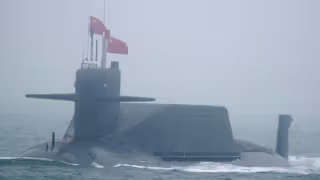
5. Conclusions and recommendations
With China’s ongoing nuclear build-up and North Korea’s continued provocations, there is a nuclear shadow over virtually all sources of potential conflict in the Indo-Pacific. This changes the way that Washington and Canberra need to consult on nuclear issues. This will be challenging. Washington and Canberra can take steps to shore up these gaps, and better position both countries to navigate potential extended deterrence and crisis management challenges. Addressing these challenges will not, and should not, be a defining feature of the alliance, but it does need to be part of the equation.
To do so, Washington and Canberra should:
1. Regularly use scenario-based discussions, tabletop exercises, and wargames to better educate policymakers on the changing nuclear threat environment, the scale and scope of joint force posture initiatives, and the implications for extended deterrence and escalation management. There is a growing disconnect between those who manage operational and technology-sharing arrangements within the alliance, and those who lead policy discussions and represent each side’s equities in disarmament forums and extended deterrence discussions. Closing this gap will require a coordinated effort to support capacity-building efforts both inside and outside of government to ensure each community understands the second- and third-order effects of their work, and to better raise the collective understanding among policymakers of the nuclear shadow over conventional capabilities and operations. A consistent commitment to integrating nuclear considerations into alliance efforts to strengthen deterrence, and incorporating both senior and staff-level officials into classified and unclassified scenario-based discussions and exercises that stress this interplay, not only helps better prepare Washington and Canberra but may also have an important deterrent effect.
2. Deepen the focus on the connections between conventional and nuclear forces and escalation management issues within the SPD. US and Australian officials should deepen their discussions on joint force posture initiatives and US nuclear operations as well as escalation management issues within the SPD. Focusing on how to advance arms control and strategic stability initiatives to head off a crisis is important, but those issues cannot and should not crowd out a detailed focus on what each side perceives as escalatory (including how they perceive Chinese red lines), who would do what during a crisis, how each side would communicate with one another and the public during a contingency, and whether and how the alliance would integrate conventional and nuclear operations during a crisis. Rather than creating a new, dedicated consultative mechanism on extended deterrence, the SPD should stand up a working group on conventional-nuclear integration that can explore different scenarios and report back to both the SPD and Defense Policy and Strategy Talks (DPST). These deliberations could then form the basis for more realistic and informed discussions on escalation management and other extended deterrence issues down the line. In the meantime, getting these details right, and leveraging specific, scenario-based tabletop exercises to do so, should be a core focus for future SPD talks.
3. Improve linkages and discussions on nuclear issues within broader US-Australian defence and security dialogues. While the SPD can and should take the lead on working through detailed extended deterrence and escalation management issues for now, it is essential that other defence and security coordination channels still include a focus on nuclear issues as well, to ensure that efforts to bolster collective deterrence do not overlook or ignore the nuclear shadow over conventional and non-kinetic capabilities. In particular, the alliance should ensure that nuclear issues are integrated into not only its ministerial-level engagements but also the DPST. Alliance managers should ensure there is deliberate cross-over at a senior level between officials who participate in SPD and DPST discussions, and establish working groups that report to both channels, such as the one proposed above.
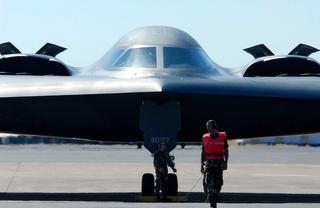
4. Develop a joint messaging strategy to better call out China’s destabilising behaviours. Attempts to induce responsible behaviour and encourage Chinese counterparts to participate in arms control talks sometimes crowd out the broader narrative about China’s nuclear modernisation, and why there are concerns with its nuclear build-up. To right-size this issue, Washington and Canberra should develop a coordinated messaging campaign to shine a light on China’s destabilising behaviour, including the scale and scope of China’s nuclear modernisation efforts, its misuse of civilian facilities to produce material for its weapons program (including the fact that it has not reported its plutonium holdings to the IAEA since 2017), and its testing of dangerous systems such as its fractional orbital bombardment system.34 Importantly, this cannot be a one-time speech or outreach campaign. Washington and Canberra need to repeatedly raise these concerns, instead of focusing simply on pressuring China to do the right thing. Australian and US officials have been shy about calling out China’s behaviour, due in large part to efforts to keep nuclear weapons-related issues out of AUKUS-related messaging, particularly given Chinese disinformation surrounding AUKUS. The time has passed for holding back.
5. Agree on public messaging to carefully tailor, and in some cases, limit, how much the alliance publicly addresses escalation concerns. There is a difference, of course, between taking steps bilaterally to improve each country’s understanding of decision-making structures and procedures during a crisis, and repeatedly expressing concerns about escalation risks publicly. Chinese officials increasingly understand that Beijing can manipulate Western fears of escalation. Constantly framing the alliance’s broader goals in terms of reducing risks and preventing escalation can exacerbate this dynamic. Carefully incorporating more statements about Washington and Canberra’s extended deterrence relationship alongside future calls for arms control and risk reduction measures may help signal that the alliance is prepared and not overly susceptible to coercion. Getting this balance right will not be easy, but when integrated with a better messaging campaign to call out China’s dangerous behaviour, it should make clear which states are acting responsibly, and which states are seeking to manipulate risks, without inadvertently playing into China’s hands.
6. Explore options for engaging Japan and South Korea on extended deterrence issues and crisis planning scenarios. Australia may benefit by better understanding how the United States approaches planning with other US allies. Finding opportunities to quietly observe or participate in other consultative mechanisms or site visits to US nuclear bases and facilities may help deepen Australia’s understanding of US nuclear planning and how the United States is approaching issues related to conventional-nuclear integration with other US allies. Managing the extensive sensitivities on all sides will be critical, but is an option worth pursuing.





